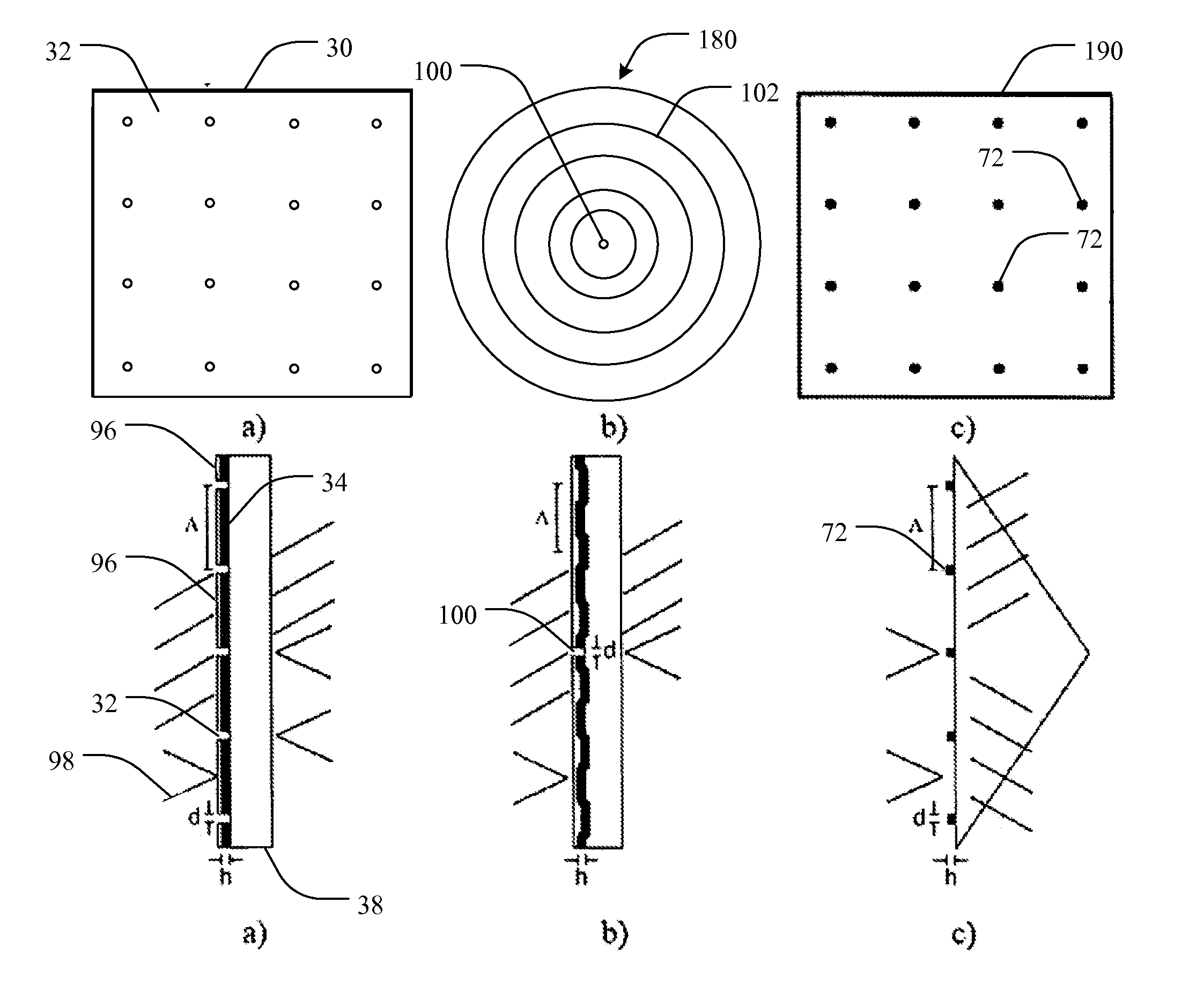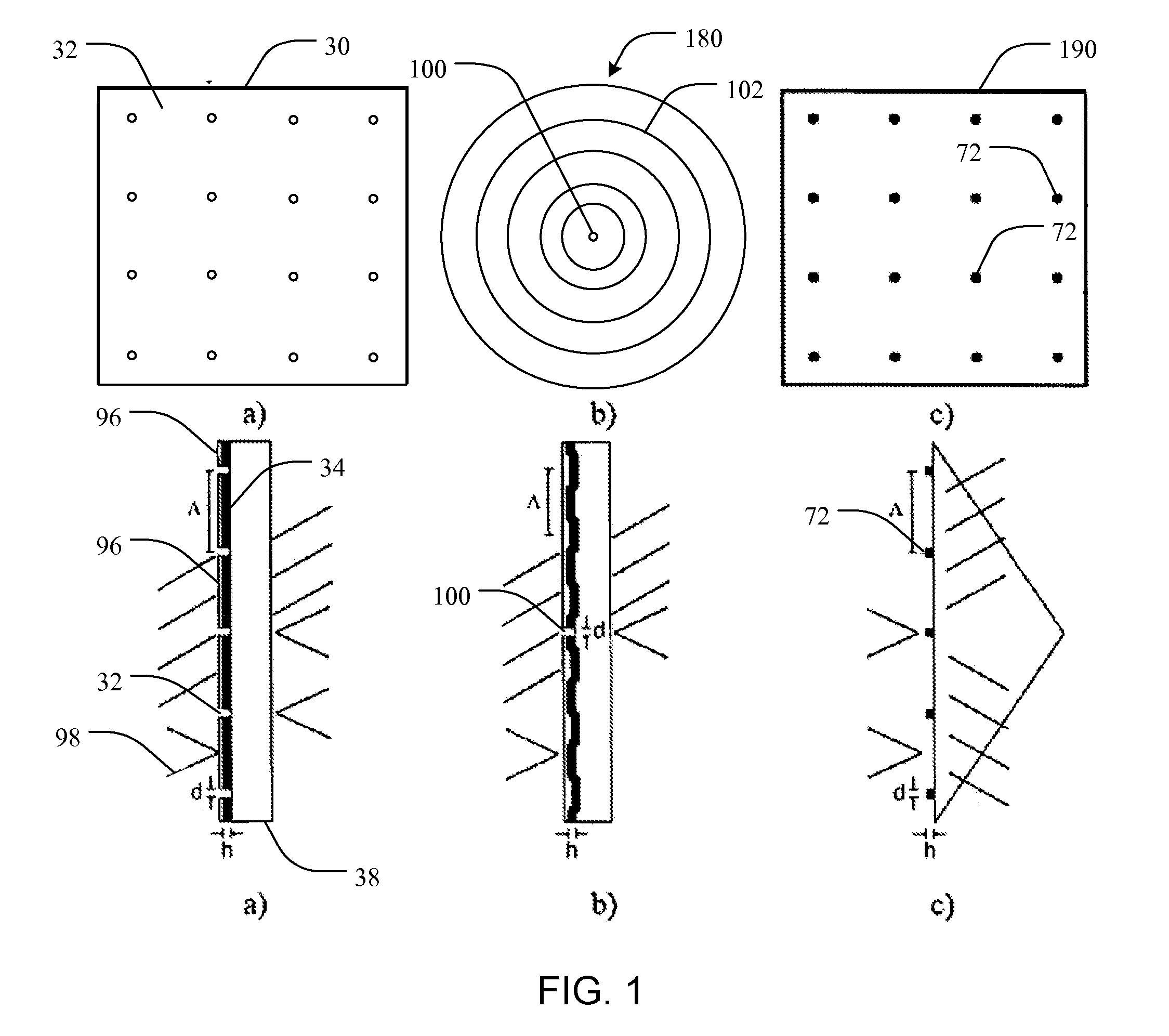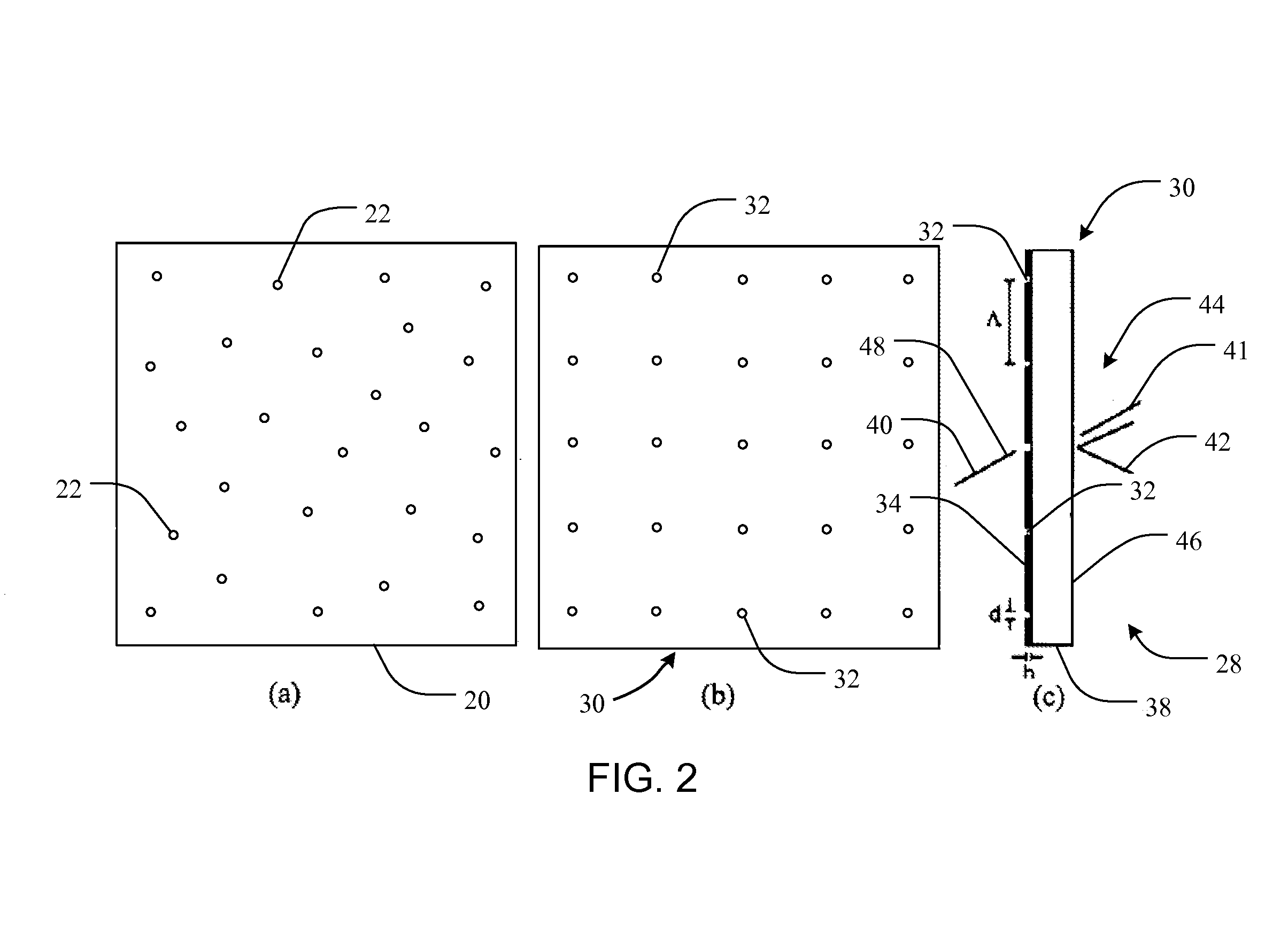Biosensors including metallic nanocavities
a nanocavity and biosensor technology, applied in the field of evanescent wave type biosensors or biomolecular assays, can solve the problems of unsuitable quantitative assay techniques, unsatisfactory nanostructures, and inability to isolate the background produced by unbound species, so as to reduce the amount of reagents and increase the homogeneity of samples
- Summary
- Abstract
- Description
- Claims
- Application Information
AI Technical Summary
Benefits of technology
Problems solved by technology
Method used
Image
Examples
examples
1. Biosensing Based Upon Molecular Confinement in Metallic Nanocavity Arrays
[0065]Liu et al. (Y. Liu, J. Bishop, L. Williams, S. Blair, and J. N. Herron, “Biosensing based upon molecular confinement in metallic nanocavity arrays,”Nanotechnology, vol. 15, pp. 1368-1374, 2004) describes the basis for an affinity biosensor platform in which enhanced fluorescence transduction occurs through the optical excitation of molecules located within metallic nanocavities. The contents of Liu et al. are hereby incorporated herein, in their entireties, by this reference. The nanocavities of Liu et al. are about 200 nm in diameter, are arranged in periodic or random two-dimensional arrays, and are fabricated in 70 nm thick gold films by e-beam lithography using negative e-beam resist. It has been shown that both periodic and randomly placed metallic nanocavities can be used to enhance the fluorescence output of molecules within the cavities by about a factor of ten. In addition, the platform provid...
PUM
| Property | Measurement | Unit |
|---|---|---|
| width | aaaaa | aaaaa |
| thickness | aaaaa | aaaaa |
| thickness | aaaaa | aaaaa |
Abstract
Description
Claims
Application Information
 Login to View More
Login to View More - R&D
- Intellectual Property
- Life Sciences
- Materials
- Tech Scout
- Unparalleled Data Quality
- Higher Quality Content
- 60% Fewer Hallucinations
Browse by: Latest US Patents, China's latest patents, Technical Efficacy Thesaurus, Application Domain, Technology Topic, Popular Technical Reports.
© 2025 PatSnap. All rights reserved.Legal|Privacy policy|Modern Slavery Act Transparency Statement|Sitemap|About US| Contact US: help@patsnap.com



